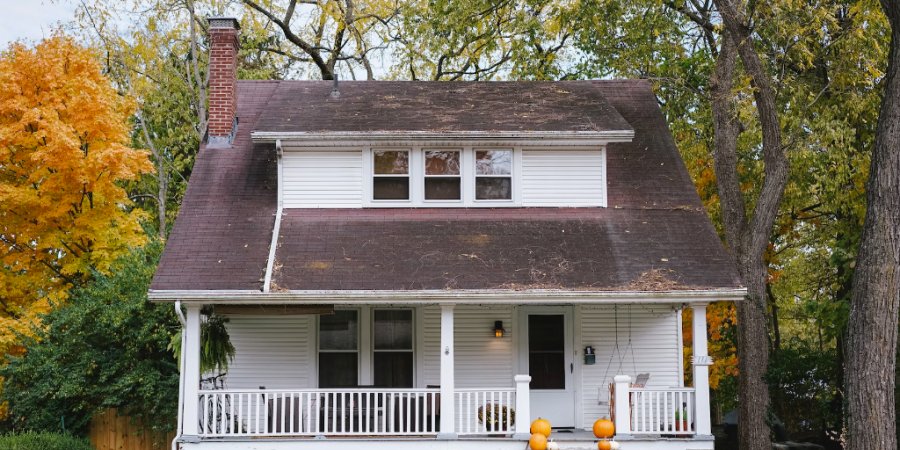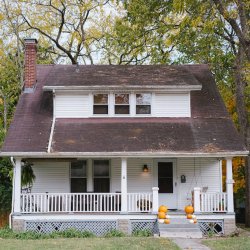The 4-Point Home Inspections and Insurance

In today's property market, one term you're likely to encounter repeatedly is the 4-point home inspection. This concept, particularly prevalent in Florida and other coastal regions, has become a key criterion for insurance companies, especially when dealing with older homes. But what is a 4-point inspection, and how does it differ from a conventional home inspection? This comprehensive guide will walk you through everything you need to know.
Understanding the 4-Point Home Inspection
A 4-point home inspection is an evaluation process that examines the four critical systems of a property – the roof, electrical, plumbing, and HVAC systems. This inspection is primarily designed to assess the property's risk level, particularly for insurance purposes.
1. The Roof
The first component of a 4-point inspection is the roof. Inspectors evaluate the roof based on its age, material, and overall condition. They look for any signs of damage, missing tiles or shingles, and potential leakage issues. The roof's shape is also assessed as it impacts the property's ability to withstand weather conditions.
2. Electrical Wiring and Panels
The second component involves a thorough examination of the home's electrical system. Inspectors check the type of wiring (copper, aluminum, cloth, or knob and tube), the brand of the electrical panel, and the overall condition of the electrical system. Certain electrical components, such as aluminum branch wiring, knob-and-tube wiring, fuses, double-tapped breakers, and cloth and sheath wiring, may not be insurable due to their associated fire hazard risks.
3. HVAC System
The HVAC (Heating, Ventilation, and Air Conditioning) system forms the third component of a 4-point inspection. The inspector evaluates the type, age, and condition of the HVAC system and checks for any signs of leakage. Central heating and air conditioning are crucial for a property to be deemed insurable.
4. Plumbing System
The final component of a 4-point inspection is the plumbing system. The inspector assesses the type, age, and condition of supply and drain lines and looks for any signs of leakage. Certain plumbing materials, such as polybutylene, may be considered high risk due to their likelihood of causing leaks.
The Importance of a 4-Point Inspection
A 4-point inspection plays a crucial role in the insurance underwriting process. It helps insurance companies determine the level of risk associated with insuring a particular property. As such, it is often a requirement for older homes, or when a homeowner is renewing their insurance policy or switching insurance providers.
Who Needs a 4-Point Inspection?
Typically, homeowners with older homes or rental properties may be required to undertake a 4-point inspection before securing home insurance. Most insurance companies require a 4-point inspection for homes older than 40 years or rental properties older than 30 years. However, it has become more common for every home to undergo a 4-point inspection when shopping for homeowners insurance.
4-Point Inspection Vs. Home Inspection
While a 4-point inspection focuses solely on the four key systems of a property, a full home inspection is much more comprehensive. It involves a thorough examination of the entire property, including the interior, exterior, appliances, garage, structural integrity, site conditions, and more. A full home inspection typically takes two to three hours to complete, while a 4-point inspection takes about 30 minutes.
4-Point Inspection Vs. Wind Mitigation Inspection
A wind mitigation inspection, on the other hand, assesses how well a property can resist wind damage. It examines factors such as roof shape, roof covering, roof-deck attachment, and opening protections. Like a 4-point inspection, a wind mitigation inspection also takes a close look at the roof.
4-Point Inspection Costs
The cost for a 4-point inspection can range from $50 to $175, depending on the location and the inspection company. It's important to ensure that the company you choose is licensed and has good reviews to ensure a correct evaluation of your home's current state.
Failing a 4-Point Inspection
Failure of a 4-point inspection can result in denial of insurance coverage. Common reasons for denial include a damaged roof, a roof missing tiles or shingles, outdated electrical wiring, homes without central air and heating, and plumbing that is high risk for leaks. However, homeowners can seek another insurance company or fix the issues that led to the denial of coverage.
Can You Get Insurance If Your Home Fails a 4-Point Inspection?
While requirements for coverage vary between insurance companies, some may offer partial coverage and exclude problematic items in the home. It's important to inform your insurance agent about any issues your home has to receive an accurate quote. If your home has not been updated and contains problematic items, you may have to pay more for your insurance or have a hard time getting coverage.
Preparing for a 4-Point Inspection
Before scheduling a 4-point inspection, ensure that areas like the attic, garage, and doors are accessible. Cover any clothing to protect from debris and insulation that might fall when opening the attic hatch. Have the last re-roofing permit for the property ready and any documentation needed for impact products.
Conclusion
A 4-point inspection is a critical step for homeowners, particularly in regions like Florida and other coastal states. It not only helps insurance companies gauge the risk associated with insuring a property but also provides homeowners with valuable insights into the condition of their homes' key systems.
However, it's important to remember that a 4-point inspection does not replace a full home inspection. Homebuyers should always engage a professional home inspector to conduct a comprehensive inspection before finalizing their purchase. This ensures that they are making a sound investment and fully understand the condition of their prospective home.
More to Read:
Previous Posts:


